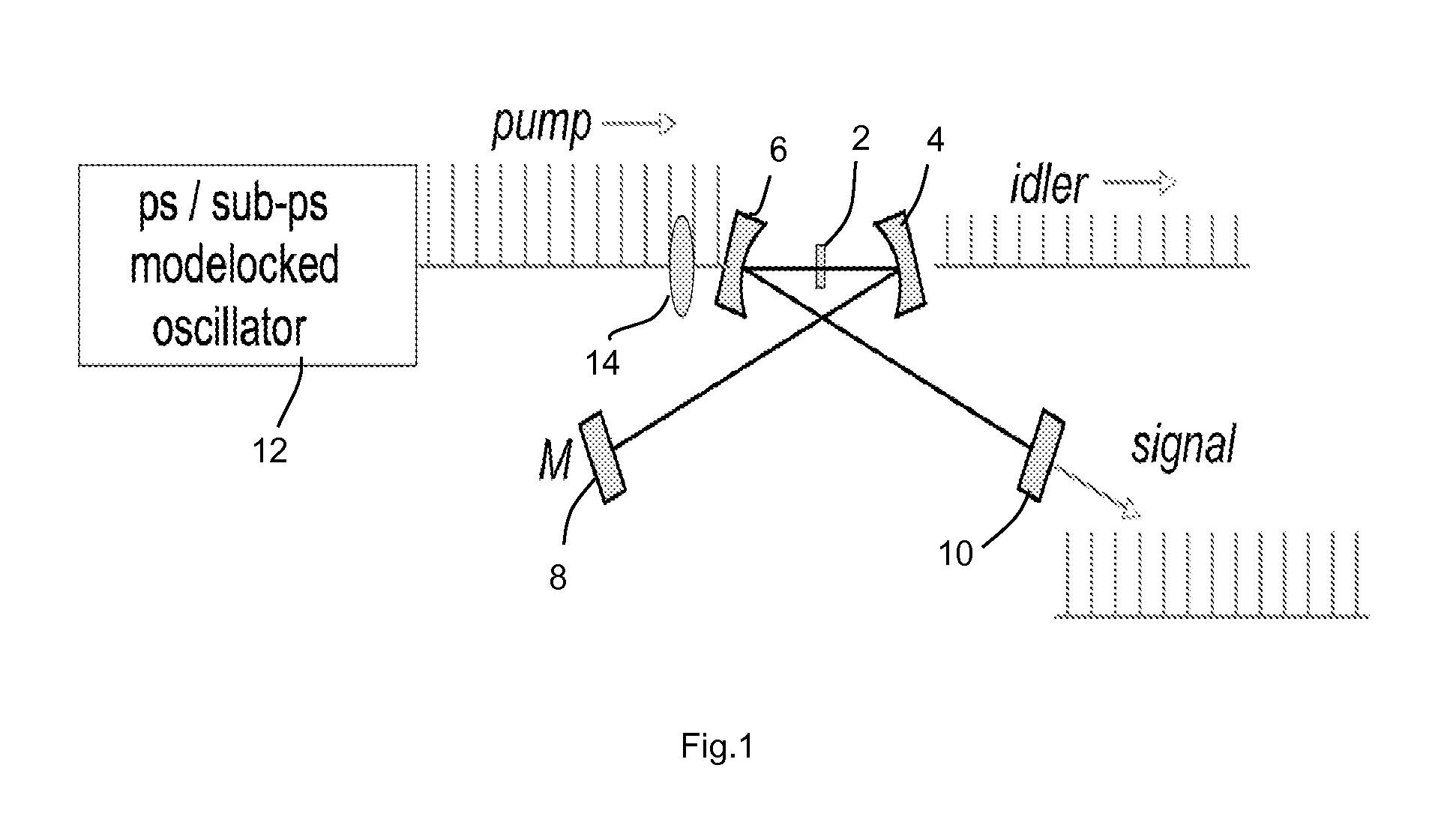Optical apparatus
a technology of optical equipment and optical cavity, applied in the field of optical apparatus, can solve the problems of low cavity finesse of the fibre feedback cavity, inability to continuously tunable, and not readily accessible to either of the conventional approaches
- Summary
- Abstract
- Description
- Claims
- Application Information
AI Technical Summary
Benefits of technology
Problems solved by technology
Method used
Image
Examples
Embodiment Construction
[0091]Throughout the following description identical reference numerals will be used to identify like parts.
[0092]FIG. 1 is a schematic diagram of a known, synchronously pumped optical parametric oscillator (OPO). The OPO comprises a non-linear crystal 2 contained in a resonant optical cavity. The resonant optical cavity is defined by two focussing mirrors 4, 6, a further mirror (M) 8 and output coupler 10. The output coupler 10 is a partially reflective mirror. A picosecond or sub-picosecond mode-locked oscillator 12 is used as a pump source, and is aligned with a focussing lens arrangement 14.
[0093]In operation, pump pulses with a fixed repetition frequency (typically ˜100 MHz) are focused by the focussing lens arrangement into the nonlinear crystal 2 contained in the resonant optical cavity. Each pump pulse forms, with radiation at the signal frequency, a mode in the nonlinear crystal, which generates a signal pulse and an idler pulse. The resonant cavity is arranged so that the ...
PUM
 Login to View More
Login to View More Abstract
Description
Claims
Application Information
 Login to View More
Login to View More - R&D
- Intellectual Property
- Life Sciences
- Materials
- Tech Scout
- Unparalleled Data Quality
- Higher Quality Content
- 60% Fewer Hallucinations
Browse by: Latest US Patents, China's latest patents, Technical Efficacy Thesaurus, Application Domain, Technology Topic, Popular Technical Reports.
© 2025 PatSnap. All rights reserved.Legal|Privacy policy|Modern Slavery Act Transparency Statement|Sitemap|About US| Contact US: help@patsnap.com



